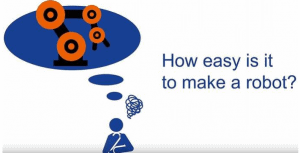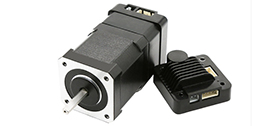- Welcome to Pulse Robot
- +86-23-63207381
- +8613677602178
- sales@pusirobot.com
How difficult to make a robotic arm?
As the world has made tremendous efforts to reduce long-term costs, maintain quality, and make time for humans to perform "human" tasks, the adoption rate of robots in many industries is increasing. For example, by using robots to clean floors or reposition shelves in supermarkets, human employees can spend more time helping or selling to their customers. Companies can take advantage of this robotics trend by buying off-the-shelf robots or by manufacturing their own robots at a lower cost. If engineering resources are limited, choosing the right components can reduce the difficulty and time of construction. In this article, I will briefly introduce the steps to build a 7-axis robotic arm, some knowledge learned along the way, and ways to reduce the number of parts.
Brainstorming-what task do you need to accomplish? Brainstorming is the conceptual stage of the machine manufacturing process, when the robot designer decides the type of robot to be built, the tasks that need to be performed, and the degree to which the work is completed. The first step can be as simple as a sketch, but the details need to be worked out. For the robotic arm, we need to determine the number of motion axes and the type of components that meet the requirements. These options include PNP or NPN output sensors, incremental or absolute encoders, parallel (in-line) reducers or right-angle reducers, harmonic or planetary gears, and most importantly closed loop stepper motors. The designer needs to evaluate the advantages and disadvantages of each type of component and choose the most meaningful component for the target application. For example, a servo motor and a closed loop stepper motor can perform the same task, but speed, noise and heat may be the decisive factors. However, over the years, these problems have been resolved. For applications that do not require extremely high speeds, a closed-loop stepper motor can meet the design requirements. It may be helpful to study how robots are designed and what parts can be made in-house. Don’t forget to pay attention to the overall cost of the machine, including man-hours, to satisfy the boss.
Determine the size of the motor. At this stage, it is time to consider the layout of all necessary components in the robot and check all specifications and dimensional drawings to ensure that all components are compatible and suitable for the design. 3D CAD drawings are a good way to visualize design. Choosing a manufacturer that can provide most of the components (and CAD drawings) can help reduce the workload. Usually, a lot of attention is paid to larger components, such as motors, drives, and PLCs, but smaller components (such as cables or switches) also require space. Keep in mind that heavier parts will require larger motors to move, so consider choosing materials for metal parts such as arm segments. At this point, it is also important to make sure that the selected motor can do the job. Many manufacturers provide motor selection software to help find the ideal motor for the application. Puse Robot attaches great importance to the selection of electric motors. Our engineers are happy to analyze your finalization results so that you can make full use of our products. Because the most convenient solution we currently use is our PMC007C6SEP2 series of integrated stepping motors with absolute encoders. This type of motor brings an absolute simple overall design. First of all, the multi-turn absolute encoder of the PMC007C6SEP2 series can make the omission of the sensor possible, and the problem of inconvenient installation of such a small space sensor will not occur. Furthermore, this type of motor will not use the traditional pulse-type drive, but will use the CAN bus transmission mode, which simplifies the wiring method and increases the signal transmission efficiency. This makes it possible to realize the multiple interpolation methods required in multi-axis motion control. After all, the multi-axis linkage effect is the most important evaluation index for the motion effect of the manipulator.


